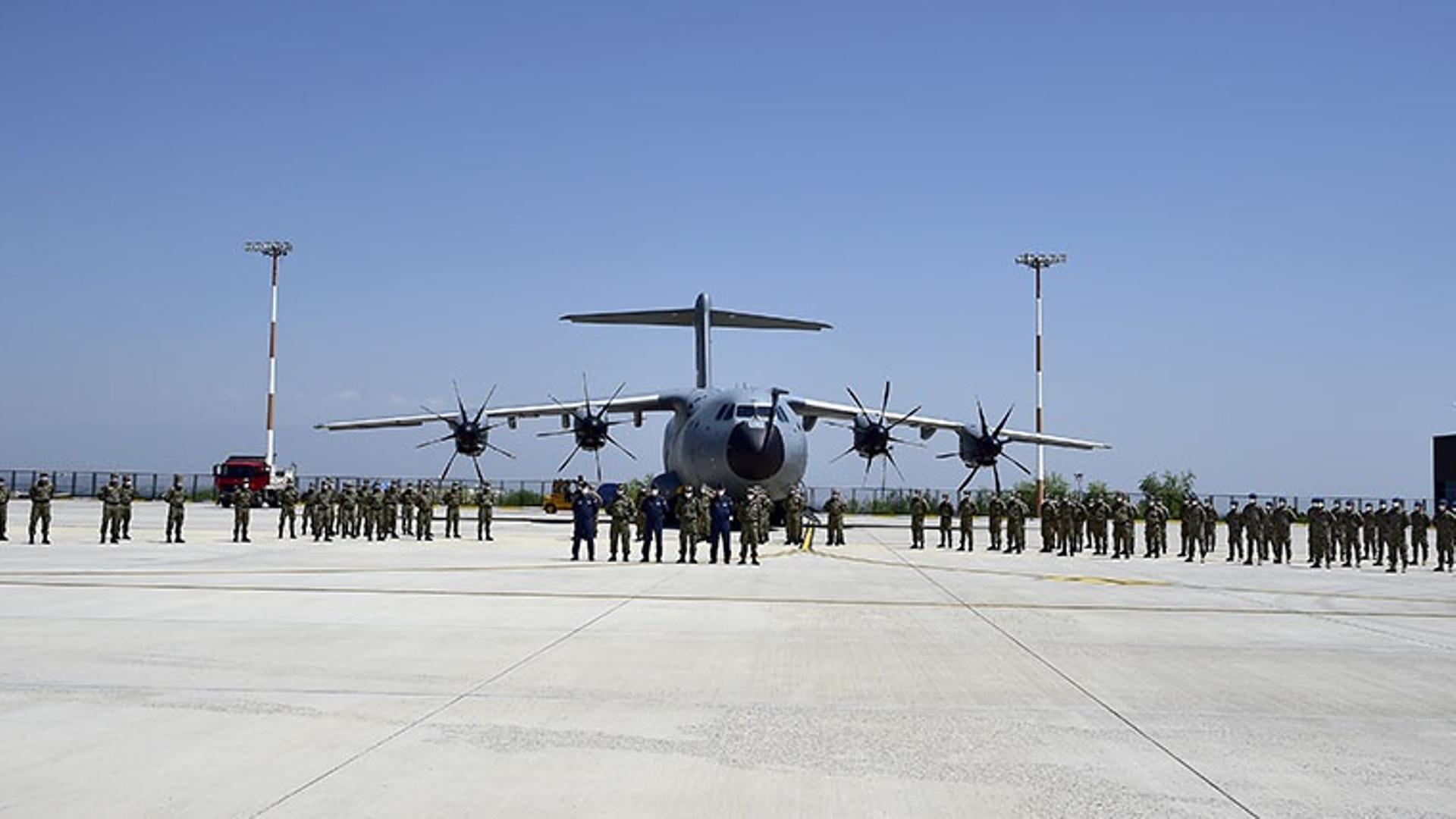Turkish and Azerbaijani armed forces will hold a large-scale joint military drill in Azerbaijan, the latter’s defence ministry said on Monday.
Both countries’ land and air forces, from armoured vehicles to aviation and air defence equipment, will be involved in the exercises.
“According to the plan, exercises involving the land forces will be held from August 1 to 5 in Baku and Nakhchivan,” a statement read. “Exercises with the participation of military aviation will be held from July 29 to Aug. 10 – in Baku, Nakhchivan, Ganja, Kurdamir and Yevlakh.”
The announcement comes after Armenian forces attacks on Azerbaijani troops in the northwestern Tovuz border region, where at least 11 Azerbaijanis, including a major general and a colonel, were killed.
Last week, a statement was produced from the Turkish National Security Council, a meeting headed by President Recep Tayyip Erdogan in Ankara, in which support for Azerbaijan against Armenian border attacks, was reiterated.
Turkey called on Armenia to stop its aggression and withdraw from the Azerbaijani lands it is occupying. The statement said following the council.
Ankara also strongly condemned the Armenian occupation of Azerbaijani territory, the statement added.
On the other hand, Turkish defence minister Hulusi Akar said his country, and the Armed Forces will continue to do what they have to do, adding: “No one should doubt that.”
History of the Azerbaijan-Armenia conflict
After Azerbaijan and Armenia were subsumed into the Soviet Union, the Nagorno-Karabakh Autonomous Region was established within Azerbaijan by the Soviet Union in 1924.
During the dissolution of the Soviet Union in the late 1980s, the question of the future of the region became a source of enmity once again and clashes began between ethnic Azerbaijanis and Armenians in November 1988. The rift continued on and off until both countries gained independence in 1991.
Karabakh held a referendum in December 1991 over the creation of an independent state, which would mean unilaterally declaring itself separate from the Republic of Azerbaijan. The majority of those who went to the referendum polls voted in favour of independence, however, most of the Azerbaijanis living in Karabakh boycotted it by saying the referendum was illegitimate.
Most countries do not recognise the legitimacy of Karabakh’s declaration of independence.
This is partly because only fifteen republics of the former Soviet Union could declare sovereignty from the union according to its constitution, and Karabakh was not one due to its status as an autonomous region. Further to this, unilateral declarations of independence are often rejected because they violate international law.
Following the referendum, the conflict escalated into a war between Azerbaijan and Armenia.
This resulted in at least 30,000 casualties and displaced an estimated 1 million people from both sides by the end of the war in 1993.
Azerbaijan and Armenia reached an unofficial ceasefire in May 1994 through Russian mediation, while Moscow reportedly supported Armenian forces militarily and politically during the conflict.
Since then, occasional clashes, like the most recent ones, continue across the countries’ border and in the occupied-Nagorno-Karabakh region.
Four UN Security Council and two UN General Assembly resolutions, as well as decisions by many international organisations, decry the illegal occupation and demand the withdrawal of Armenian forces from Upper Karabakh and seven other occupied regions of Azerbaijan.










Discussion about this post